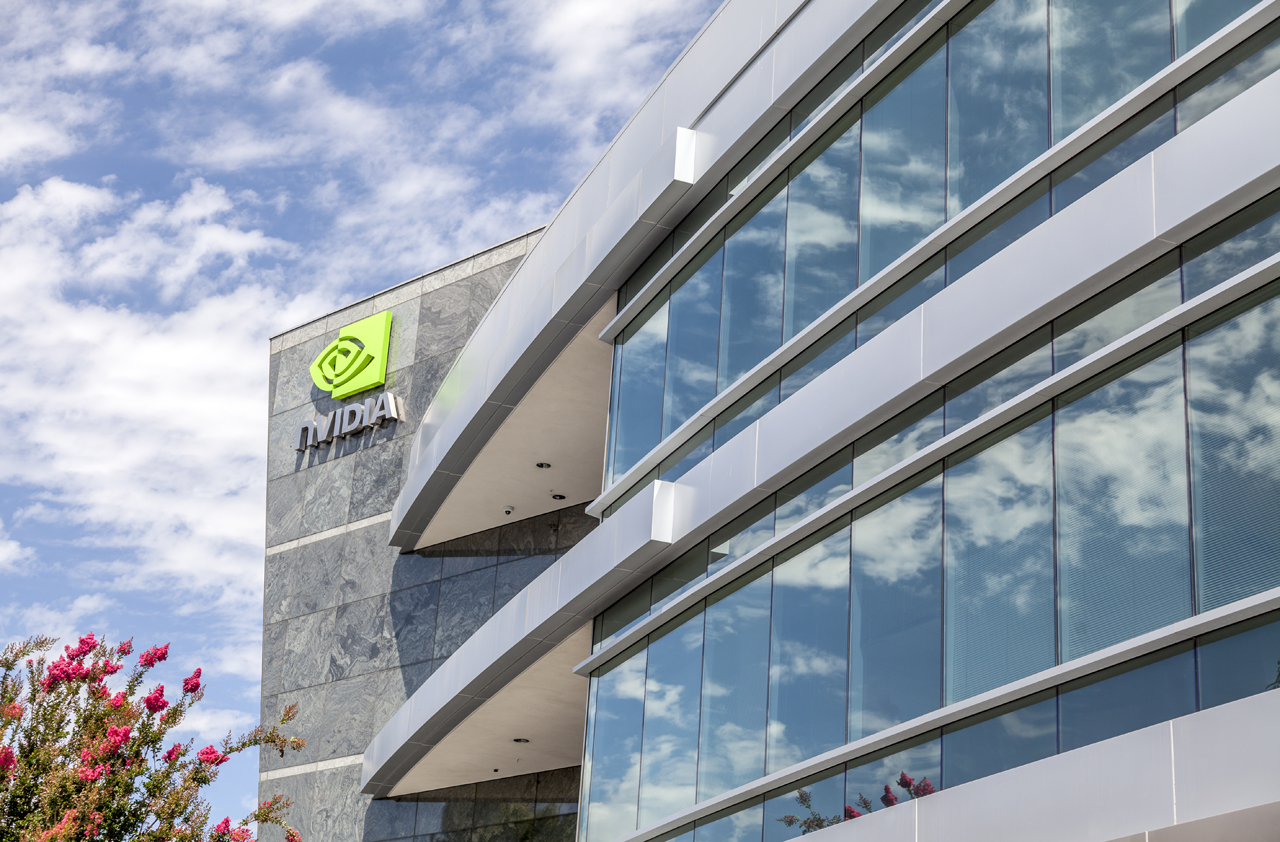Doubt Nvidia (NVDA) at Your Own Peril
Besides valuation concerns, what (if anything) could slow NVDA stock down? If such a speed bump is out there, nobody has seen it yet.


Two years ago, Nvidia Corporation (NVDA, $250.95) was a well-respected technology name, but not necessarily a head-turner.
What a difference two years – and a 400%-plus gain – can make. The introduction of some new products, another round of evolution within the computer industry and the advent of cryptocurrency mining all helped fan the bullish flames that sent NVDA shares roaring higher.
Shareholders have enjoyed the ride, to be sure. The scope of the gain and the cyclical nature of technology, however, leave investors pondering whether the next two years could be as fruitful as the past two have been.
From just $107.88 $24.99 for Kiplinger Personal Finance
Become a smarter, better informed investor. Subscribe from just $107.88 $24.99, plus get up to 4 Special Issues

Sign up for Kiplinger’s Free Newsletters
Profit and prosper with the best of expert advice on investing, taxes, retirement, personal finance and more - straight to your e-mail.
Profit and prosper with the best of expert advice - straight to your e-mail.
A close-second question that investors are asking: Besides valuation concerns, what (if anything) could slow NVDA stock down?
If such a speed bump is out there, nobody’s seen it yet.
Technological Serendipity
The word “Pascal” may ring a bell with some investors, but not as it relates to Nvidia. The term “GeForce” won’t mean much more to anyone outside of the computer world.
To anyone who intimately knows Nvidia’s story, though, those are the microarchitecture and the graphics card product line, respectively, that turned Nvidia into the monster it has become just since 2016.
The numbers speak for themselves. Last year’s revenue was 41% better than 2016’s, reaching a company record of $9.7 billion. Nvidia is expected to grow the top line at a similar pace this year. Next year’s revenue expansion should finally taper off thanks to tougher year-over-year comparisons … but that’s the kind of problem companies love to have. Earnings have, and will, improve in step with revenue growth.
The rise of cryptocurrencies and the manic phase of interest they induced last year gets much of the credit for Nvidia’s meteoric rise.
As it turns out, the same mini-computers that power graphics processor cards are outstanding number-crunching platforms (better than more traditional computer processors made by the likes of Intel), making them well-suited for cryptocurrency “mining.” Ergo, while the price of popular cryptocurrency Bitcoin soared by 1,318% last year, crypto-mining became a full-blown business venture, prompting a wave of purchases of graphics cards that made them tough for all would-be buyers to find. Prices skyrocketed, and Nvidia (and its stock) was seen as the beneficiary of that euphoric demand for its hardware.
That’s the line of reasoning, anyway.
Truth be told, nobody – including the company – really knows exactly how much of its recent business stemmed from cryptocurrency miners, and how much of it can simply be chalked-up to video gamers looking for a better gaming experience. The best guess we have is from Nvidia CFO Colette Kress, recently hinted that crypto-mining only accounted for around 10% to 15% of the company’s total revenue. It’s something, but not a lot in the grand scheme of things.
The lion’s share of its business remains gaming graphic cards, driving roughly 53% of its first-quarter revenue. That arm saw 68% year-over-year sales growth for the quarter in question; the unveiling of a few different GPUs over the course of the past several months maintained the sales frenzy from last year’s Q4.
The growth engine of Nvidia’s future, however, won’t be the somewhat cyclical GPUs intended for gaming. This company’s future is going to lean heavily on data-center revenue, and artificial-intelligence-driven revenue in particular.
Artificial Intelligence
Graphic processors have been tremendous tools for mining digital currencies, they’re even better as the platform that makes AI possible.
Most of the number-crunching needed to make artificial intelligence “work” isn’t terribly complicated; complex calculations and computations still are best handled by traditional central processing units (CPUs). Where the typical CPU comes up short, though, is in the limited number of pieces of data they can handle at a time: one. GPUs were built from the ground up to perform millions of simultaneous calculations – a must for AI applications. The company has been making AI-specific graphics processors for a while now, and has secured its spot as the industry’s go-to number-crunching solution.
Nvidia’s technologies can be tapped in a myriad of ways, too.
The cloud was and still is one such option.
The Nvidia GPU Cloud platform, unveiled a little more than a year ago, gives artificial-intelligence programmers access to a bank of powerful GPUs necessary to develop AI applications without crowding up an office environment. Renting access (and scaling that access) to high-performance computers has allowed many developers to enter the AI fray when they may not have otherwise been able to. In the meantime, Nvidia has added new cloud options, including access via Amazon.com’s (AMZN) cloud computing platform.
Increasingly, though, with the potential of artificial intelligence becoming more and more realized, Nvidia is outright selling hardware and solutions to organizations that can manage and afford them. Ian Buck, vice president of Nvidia’s Accelerated Computing arm, recently explained, “We’re seeing folks like SAP (SAP), Salesforce (CRM), eBay (EBAY) start to train neural networks and deploy their neural networks on GPUs for inferencing in on-prem environments,” adding “It’s more comforting to have data on their own premises, on their own servers that they control.”
The outcome is the same either way, however: Most anything a human brain (or brains) can reason or calculate, a computer can do much, much better.
Practical applications of AI are starting to emerge; purposes well beyond an effective voice-activated assistant or winning trivia game shows. Earlier this year, Nvidia launched a program called Clara, which combines artificial intelligence and digital visualization know-how to create a medical imaging tool. It could make other diagnostic imaging approaches obsolete.
Nvidia is also waist-deep in the nascent but accelerating self-driving car business. Its DRIVE platform has been billed as the “world’s first functionally safe AI self-driving platform.” While testing of that technology was suspended in March following a fatal collision involving a self-driving Uber vehicle (Nvidia and Uber aren’t working together on autonomous cars), self-driving vehicles are an inevitability.
Self-driving vehicles also are expected to create a market worth $20 billion by 2024, while the overall artificial-intelligence market is projected to grow to nearly $60 billion as soon as 2021.
Even those robust outlooks might underestimate what’s ahead for AI, however, as we begin to use artificial intelligence to figure out how to get more out of our artificial intelligence capabilities.
James Wang, research analyst with ETF provider ARK Invest, explains “We’re not just creating and training AI networks, but using AI to search for new AI algorithms. However, there is a gap between what we need and what we have … You need to fill the gap between Moore’s Law and what we need. How do we do this? Companies like Nvidia.”
It points to a fruitful future that few people may fully appreciate just yet.
Looking Ahead at NVDA Stock
It’s all quite impressive, though it wouldn’t be unfair to suggest Nvidia isn’t all that well-defended from competitors. Advanced Micro Devices (AMD) makes quality graphics processors too, and Intel (INTC) soon will. It’s conceivable these rivals could turn into legitimate competition, chipping away at Nvidia’s gaming market share and winning some AI business as the artificial intelligence industry matures.
If investors are being completely intellectually honest with themselves, though, Nvidia is miles ahead of any competition on the GPU front, regardless of how that graphical processing technology is to be utilized.
ARK Invest’s Wang, who is also a former product manager for Nvidia, says, “We have held NVDA since the inception of our public ETFs and continue to hold it with high conviction. We think they are the far away leader in artificial intelligence processors.” It helps that Nvidia’s innovation largely helped shape what the AI industry has become, tilting the playing field in its favor.
Meanwhile, Nvidia’s gaming GPUs are still crushing it. That semi-cyclical business may be moving into a soft patch, but it always rekindles.
That doesn’t necessarily make NVDA stock a name worth blindly stepping into right now. The stock’s presently priced at more than 40 times its trailing per-share earnings, and though profits are projected to grow nicely through next year, the forward-looking P/E of just above 30 is almost as frothy. That doesn’t leave much room for straight-away upside, even if the current fiscal year’s expected 35% growth in revenue pans out.
For investors that can take a step back and look at the bigger-picture though, there’s little on the horizon that looks like it’s going to be able to even slow NVDA stock down, let alone stop it in its tracks.
Any decent dip is arguably a buying opportunity.
Profit and prosper with the best of Kiplinger's advice on investing, taxes, retirement, personal finance and much more. Delivered daily. Enter your email in the box and click Sign Me Up.

-
 Nasdaq Leads as Tech Stages Late-Week Comeback: Stock Market Today
Nasdaq Leads as Tech Stages Late-Week Comeback: Stock Market TodayOracle stock boosted the tech sector on Friday after the company became co-owner of TikTok's U.S. operations.
-
 Disney’s Risky Acceptance of AI Videos
Disney’s Risky Acceptance of AI VideosThe Kiplinger Letter Disney will let fans run wild with AI-generated videos of its top characters. The move highlights the uneasy partnership between AI companies and Hollywood.
-
 Ask the Editor: Itemized Deductions
Ask the Editor: Itemized DeductionsAsk the Editor In this week's Ask the Editor Q&A, Joy Taylor answers questions on itemized deductions claimed on Schedule A of Form 1040
-
 Cooler Inflation Supports a Relief Rally: Stock Market Today
Cooler Inflation Supports a Relief Rally: Stock Market TodayInvestors, traders and speculators welcome much-better-than-hoped-for core CPI data on top of optimism-renewing AI earnings.
-
 Nasdaq Sinks 418 Points as Tech Chills: Stock Market Today
Nasdaq Sinks 418 Points as Tech Chills: Stock Market TodayInvestors, traders and speculators are growing cooler to the AI revolution as winter approaches.
-
 AI Stocks Lead Nasdaq's 398-Point Nosedive: Stock Market Today
AI Stocks Lead Nasdaq's 398-Point Nosedive: Stock Market TodayThe major stock market indexes do not yet reflect the bullish tendencies of sector rotation and broadening participation.
-
 Dow Adds 646 Points, Hits New Highs: Stock Market Today
Dow Adds 646 Points, Hits New Highs: Stock Market TodayIt was "boom" for the Dow but "bust" for the Nasdaq following a December Fed meeting that was less hawkish than expected.
-
 Dow Rises 497 Points on December Rate Cut: Stock Market Today
Dow Rises 497 Points on December Rate Cut: Stock Market TodayThe basic questions for market participants and policymakers remain the same after a widely expected Fed rate cut.
-
 JPMorgan's Drop Drags on the Dow: Stock Market Today
JPMorgan's Drop Drags on the Dow: Stock Market TodaySmall-cap stocks outperformed Tuesday on expectations that the Fed will cut interest rates on Wednesday.
-
 Crypto Trends to Watch in 2026
Crypto Trends to Watch in 2026Cryptocurrency is still less than 20 years old, but it remains a fast-moving (and also maturing) market. Here are the crypto trends to watch for in 2026.
-
 Stocks Bounce Back With Tech-Led Gains: Stock Market Today
Stocks Bounce Back With Tech-Led Gains: Stock Market TodayEarnings and guidance from tech stocks and an old-school industrial lifted all three main U.S. equity indexes back into positive territory.